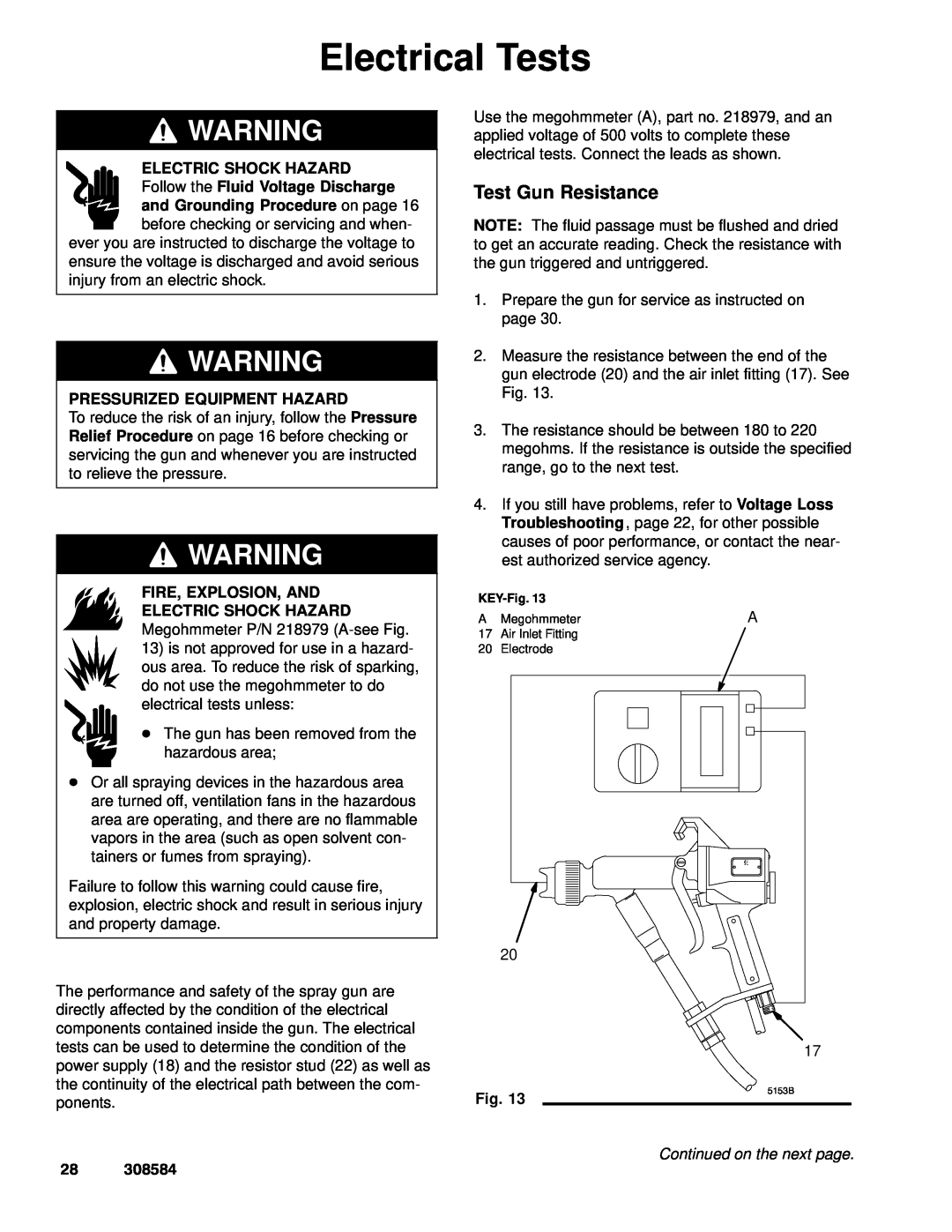
Electrical Tests
![]() WARNING
WARNING
ELECTRIC SHOCK HAZARD Follow the Fluid Voltage Discharge and Grounding Procedure on page 16 before checking or servicing and when-
ever you are instructed to discharge the voltage to ensure the voltage is discharged and avoid serious injury from an electric shock.
![]() WARNING
WARNING
PRESSURIZED EQUIPMENT HAZARD
To reduce the risk of an injury, follow the Pressure Relief Procedure on page 16 before checking or servicing the gun and whenever you are instructed to relieve the pressure.
![]() WARNING
WARNING
FIRE, EXPLOSION, AND
ELECTRIC SHOCK HAZARD
Megohmmeter P/N 218979
13)is not approved for use in a hazard- ous area. To reduce the risk of sparking, do not use the megohmmeter to do electrical tests unless:
DThe gun has been removed from the
hazardous area;
DOr all spraying devices in the hazardous area are turned off, ventilation fans in the hazardous area are operating, and there are no flammable vapors in the area (such as open solvent con- tainers or fumes from spraying).
Failure to follow this warning could cause fire, explosion, electric shock and result in serious injury and property damage.
Use the megohmmeter (A), part no. 218979, and an applied voltage of 500 volts to complete these electrical tests. Connect the leads as shown.
Test Gun Resistance
NOTE: The fluid passage must be flushed and dried to get an accurate reading. Check the resistance with the gun triggered and untriggered.
1.Prepare the gun for service as instructed on page 30.
2.Measure the resistance between the end of the gun electrode (20) and the air inlet fitting (17). See Fig. 13.
3.The resistance should be between 180 to 220 megohms. If the resistance is outside the specified range, go to the next test.
4.If you still have problems, refer to Voltage Loss Troubleshooting , page 22, for other possible causes of poor performance, or contact the near- est authorized service agency.
A | Megohmmeter | A |
17 | Air Inlet Fitting |
|
20 | Electrode |
|
The performance and safety of the spray gun are directly affected by the condition of the electrical components contained inside the gun. The electrical tests can be used to determine the condition of the power supply (18) and the resistor stud (22) as well as the continuity of the electrical path between the com- ponents.
20
Fig. 13
17
5153B
28 308584
Continued on the next page.
